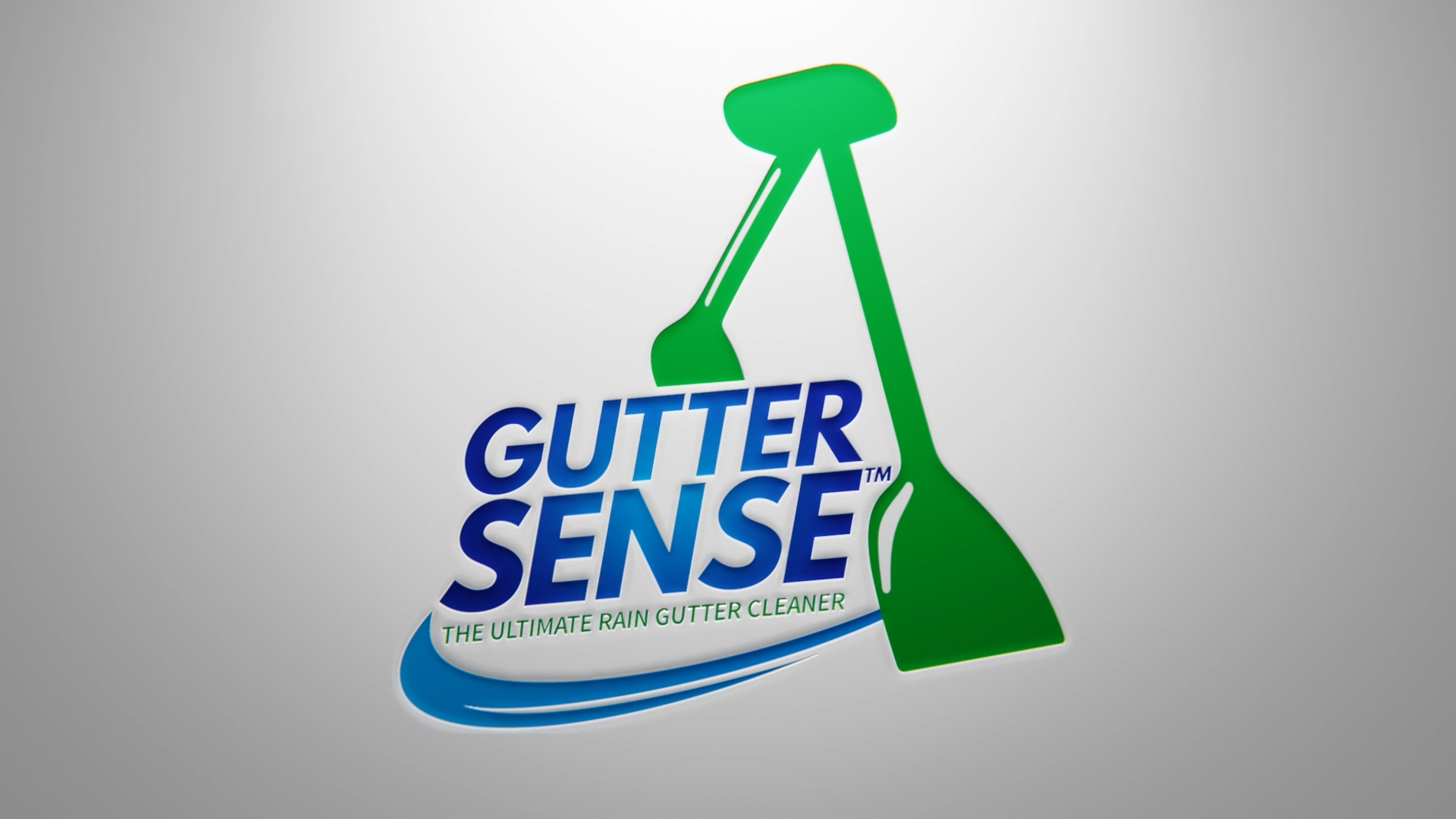house gutter cleaning and gutter sense FAQs
Check out our interactive FAQ video
Gutter Sense Gutter cleaning tool FAQs
How often should I clean my rain gutters?
In many cases, homeowners have gutters with partial or complete clogs during much of the year. This is because it is too much trouble to get up there and clean them more frequently. With Gutter Sense, you can clean out gutters as often as necessary to keep your gutters flowing. This can be many times a season or every other year. It depends on how many and what type of trees you have and how close they are to your house. Second-story gutters usually require only infrequent cleaning.
I have very old narrow gutters. Will Gutter Sense work with them?
The paddles on Gutter Sense are 2-1/2″ wide. To deal with narrow gutters, some users tape the tongs together and grind the front edge of the paddles to make them narrower. This will void any warranty and tools with modifications are not eligible for return.
I have a hard time yanking out the debris. The shingles seem to get in the way.
Excess shingle overhang may curl down into the gutter restricting access. They can also cause problems dislodging large clumps of debris. Trim back the excess or try closing the gutter tongs part way before lowering the gutter cleaning tool into the debris to take smaller bites. Then clean more frequently so there will be less debris per bite.
Will Gutter Sense work with round bottom gutters?
Since the paddles of Gutter Sense are straight along the bottom, they will miss some small particles at the very bottom of a round gutter. This residue should not keep your gutters from flowing properly. When grasping leaves, especially if they are wet, they tend to bunch up and drag out debris even from the bottom of a round gutter.
How durable is Gutter Sense?
We make Gutter Sense of a tough glass-filled nylon, but it is still plastic and can break if one does not handle the tool properly. The tool is extremely lightweight to make it easy to handle on a long pole. Parts are no more massive than necessary to do the job. Read the Care/Cautions section to avoid mishandling the Gutter Sense tool in a way that could cause breakage. Don’t try and force a large mass of debris out of the gutter when it is between the shingle overhang and the gutter edge. Rather than use force, close the tongs a bit first before entering the gutter and taking a smaller bite. Gutter Sense is for the motions of grasping and lifting out debris only.
Will Gutter Sense work with any gutter?
Gutter Sense is basically designed primarily for flat bottomed K gutters (see above for round gutters). The Gutter Sense gutter cleaning tool works in most gutters and for most debris. However, there may be some special situation where it might not perform. That’s why we provide a 30 day return policy. Please try out your new tool when it arrives so you can return it in time if it does not meet your expectations.
How long of a pole should I use?
A threaded push broom handle may be all that you need for a very low single story gutter, but most situations call for a longer pole. An extension pole should be long enough to extend between waist level and the gutter while standing far enough away from the wall to avoid being showered with debris. An 18 or 24 ft. pole is necessary for a two-story gutter. Landscape obstacles can also increase the pole length necessary.
I have a tree pruning sectional pole. Can I use that with Gutter Sense?
Gutter Sense uses a conventional ¾ x 5 TPI Acme thread as used by most paint rollers. Most pruning poles have tapered or socket ends that are incompatible. Some pruning sectional poles are quite heavy. You might find you are better off obtaining a more suitable pole for use with Gutter Sense.
Do you recommend a certain pole to use with Gutter Sense?
Cam-lock extension poles tend to slip or allow the pole sections to twist. You want a pole that won’t do either. Get a good quality pole with external collet locks or pushbutton locks. The largest section should be made of fiberglass for electrical safety.
Won’t I still have to get up on a ladder to check and see if the gutter is clean enough?
No, just cycle the tool in the cleaned gutter. If nothing much comes out you did the job. A little leftover debris is not going to hurt anything and usually collects near the downspout after a rain where you can easily remove it with Gutter Sense.
I find that sometimes I end up grasping the gutter supports. How can I avoid that?
It takes a little practice to discern when you are touching a support inside the tongs. After cleaning a couple of times it should be second nature to easily distinguish touching the support outside of the tongs. If you encounter unusually closely spaced supports you may have to close the tool partially before you can get between them.
Is it better to wait till the leaves are dry before cleaning?
Gutter Sense grasps leaves wet or dry, but they clump together better if they are a little wet.
I’m a lady who is not all that strong. Does it take a lot of strength to use Gutter Sense?
The higher your gutter, the longer a pole you will need to reach it. The longer the pole, the more weight you are supporting. The longer the pole the harder it will be to control. Nonetheless many women report using Gutter Sense at two stories. For one-story gutters even a child should be able to handle it. It only takes a few pounds of force to pull the cord.
I clean out gutters with Gutter Sense but water still overflows.
In all likelihood you have a clog in your downspout. T Gutters often clog where the downspout angles back to the house from under the gutter. Downspout return bends should be no sharper than about 45 degrees. Putting a plumber’s rodding tool up the downspout is one means of unblocking a clogged downspout. Another is attacking the problem from above with a stiff bent wire taped to your pole. A garden hose put up the downspout might also do the trick.
How long does it take to clean gutters with Gutter Sense?
That depends on the type and amount of debris, as well as the length and height of the gutter. It also depends on the mechanical ability of the user and the practice one has with the tool among other factors. I have 75 feet of gutter, 1-1/2-stories high, use a twelve-foot extension pole, and am familiar with the tool. I have a lot of trees, pines among them, and it takes me about fifteen to twenty minutes to clean them when fully loaded with Gutter Sense.
Can Gutter Sense pick up sticks and packed debris?
Gutter Sense is effective for removing most sorts of debris, even an errant golf ball, but I have seen conditions where owners did not clean out gutters with foot high trees growing in them with their roots interlacing with dirt and pine needles creating a kind of cement. Even Gutter Sense has a limit!
In this situation, first loosen debris with a bent heavy wire taped to your pole. Then, pick out the debris using small bites. You may encounter a flat stick lying on the bottom of the gutter that is longer then the span of the paddles. Usually you can grasp an end and lift it out.
If you want to add bite to the paddles you can easily add teeth to the bottom edge. However, doing so will cancel the Gutter Sense warranty or return option. Most people like the smooth edged paddles because they also pick up roofing gravel and dirt. For a toothed edge, you can close the paddles and tape along the edge to keep them from shifting. Place the paddles edge up in a vise and mark off along the edge every half inch. Then using a 1/4 inch rat-tail file, cut into the edges at the marks to about half the diameter of the file.
What features make Gutter Sense superior to other gutter cleaning tools?
The Gutter Sense gutter cleaning tool weighs about 6 oz. allowing it to be used up to two stories. It fits ordinary variable length extension poles and rope operation allows the operator to actuate the tool anywhere along its length. Gutter Sense’s tongs are angled for easy entry and exit from the gutter. The gutter tongs can oscillate as the rope is pulled so both paddles run flat on the bottom of the gutter. This enables the tool to pick up small debris like pine needles even if the pole becomes slightly canted. The shallow paddle design and inverted V angle of the tongs clean easily under gutter supports. The monofilament actuating line eliminates the need for levers. Pull force is directed just above the paddles allowing the tongs to be made thin and light. A wing nut adjusts for landscape obstacles.
This combination of design features make this gutter cleaning tool exceptionally user-friendly and easy to master. It is also far more efficient than vacuum or water devices. Blowers work well on dry debris, but things get messy if it’s wet and require getting up on a ladder or walking along the roof, either of which is dangerous. There is also a noise and pollution factor. Gutter Sense also doubles as an extended reach pickup tool when you adjust the tongs forward.
How about using extended reach tools you use while up on a ladder?
The object of extended reach tools is to minimize the repositioning of the ladder. While the concept would seem to make sense, in the real world, this kind of tool can be a real hazard to use. You still have to climb a ladder and need a lot of muscle strength to maneuver the tool at any meaningful distance with one hand because of the leverage involved. If you work the tool with both hands you won’t be holding onto the ladder. This is very dangerous. Also, supports get in the way of moving the debris.
What is your privacy policy?
Any names addresses etc. given for the purposes of sending our products is kept private.
How do I re-string Gutter Sense?
Use 100 lb. test monofilament. Begin by passing mono line through pull rope loop so pull rope is attached. Next, pass line through upper rear slot, then down to the first hole you come to in the tong. Pass line through that hole, cross over to the other tong and pass line through the lowest hole. Turn end of the line twice into the loop of a simple knot (double overhand knot). Follow same procedure with the other end of the line. Be sure there is enough slack in line to have about an inch loop hanging with the pull rope between the upper slots with the tongs open. Tighten knots with pliers. Leave about a one-inch tail behind knots to prevent pull through. Lubricate mono line with the grease provided.

